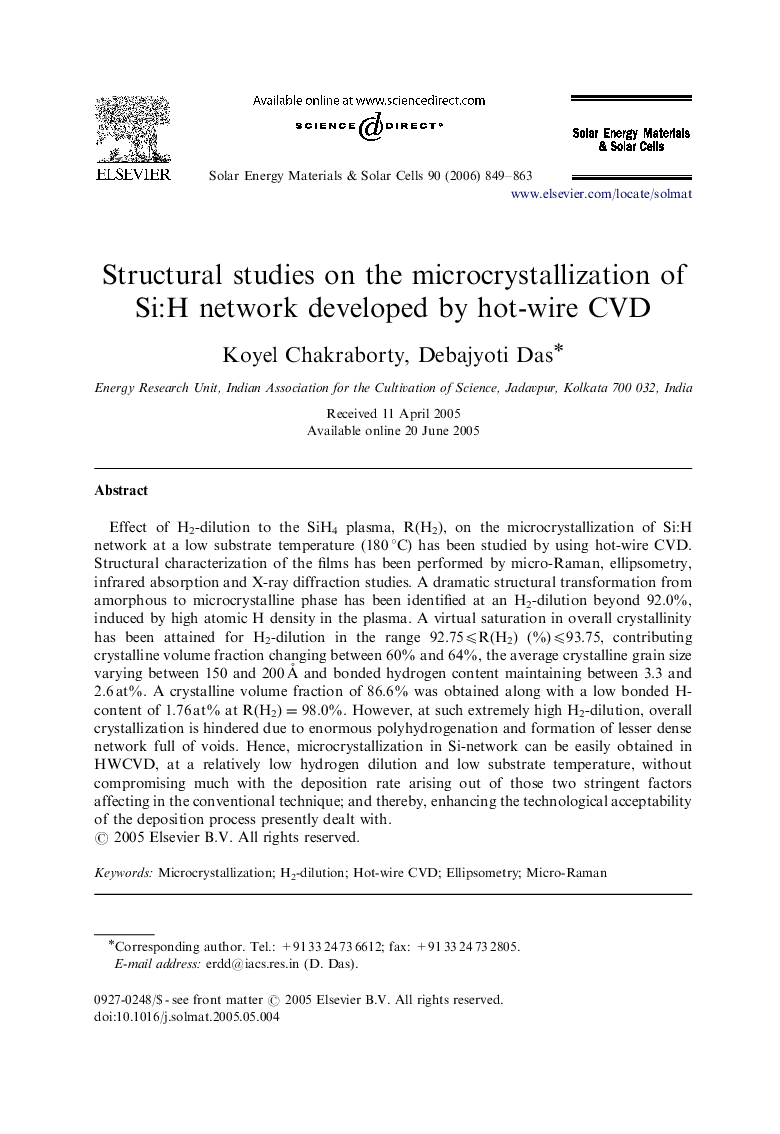| کد مقاله | کد نشریه | سال انتشار | مقاله انگلیسی | نسخه تمام متن |
|---|---|---|---|---|
| 81284 | 49453 | 2006 | 15 صفحه PDF | دانلود رایگان |

Effect of H2-dilution to the SiH4 plasma, R(H2), on the microcrystallization of Si:H network at a low substrate temperature (180 °C) has been studied by using hot-wire CVD. Structural characterization of the films has been performed by micro-Raman, ellipsometry, infrared absorption and X-ray diffraction studies. A dramatic structural transformation from amorphous to microcrystalline phase has been identified at an H2-dilution beyond 92.0%, induced by high atomic H density in the plasma. A virtual saturation in overall crystallinity has been attained for H2-dilution in the range 92.75⩽R(H2) (%)⩽93.75, contributing crystalline volume fraction changing between 60% and 64%, the average crystalline grain size varying between 150 and 200 Å and bonded hydrogen content maintaining between 3.3 and 2.6 at%. A crystalline volume fraction of 86.6% was obtained along with a low bonded H-content of 1.76 at% at R(H2)=98.0%. However, at such extremely high H2-dilution, overall crystallization is hindered due to enormous polyhydrogenation and formation of lesser dense network full of voids. Hence, microcrystallization in Si-network can be easily obtained in HWCVD, at a relatively low hydrogen dilution and low substrate temperature, without compromising much with the deposition rate arising out of those two stringent factors affecting in the conventional technique; and thereby, enhancing the technological acceptability of the deposition process presently dealt with.
Journal: Solar Energy Materials and Solar Cells - Volume 90, Issues 7–8, 5 May 2006, Pages 849–863